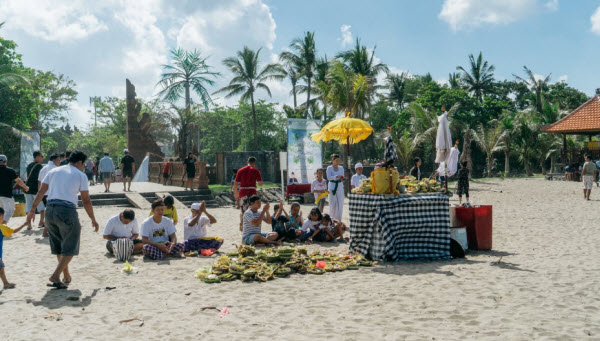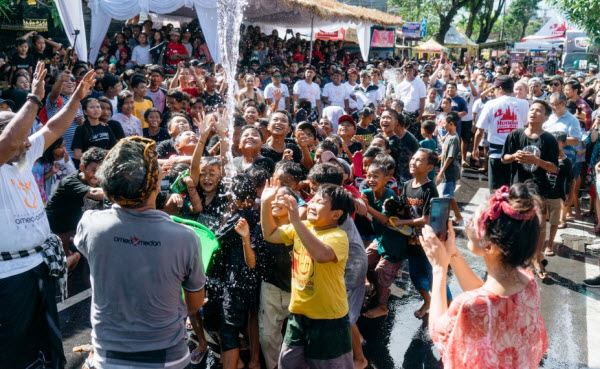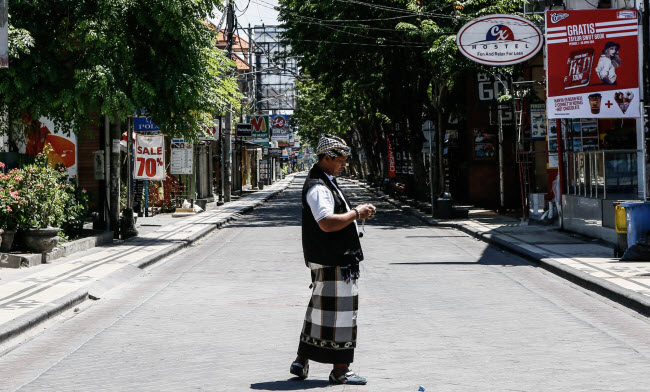Bali, an island in Indonesia, is renowned worldwide for its vibrant celebrations and festivals throughout the year. However, like many cultures, Bali has its own unique way of ringing in the New Year, known as the Balinese New Year. This celebration aligns with the new moon in March and is marked by several days of joyful Hindu rituals, culminating in a day called Nyepi, or the Day of Silence. On this day, all residents of the island remain in their homes, turn off their lights, and maintain complete silence. Streets become eerily empty as life comes to a halt, allowing for a full day of prayer, reflection, and meditation.

The Balinese New Year coincides with the new moon in March. According to local beliefs, during this time of year, the god of hell sends all demons to Bali. To prepare for the new year, the island must be cleansed of these spirits. Preparations begin weeks in advance, with giant, frightening effigies appearing throughout the island. Each village creates its own demonic effigy, known as “Ogoh-Ogoh,” to participate in a parade called “Ngerupuk” on the eve of Nyepi. These effigies are made from papier-mâché, painted, and decorated as needed. Villagers, including youth and children, construct the largest and most terrifying effigy to represent their village in the parade. The Ogoh-Ogoh are believed to embody evil spirits that cause pollution, natural disturbances like earthquakes and floods, or general malaise. The frightening appearance of these effigies is inspired by legendary malevolent creatures and is crucial for the nighttime ritual known as the “Purification Parade” before the New Year.
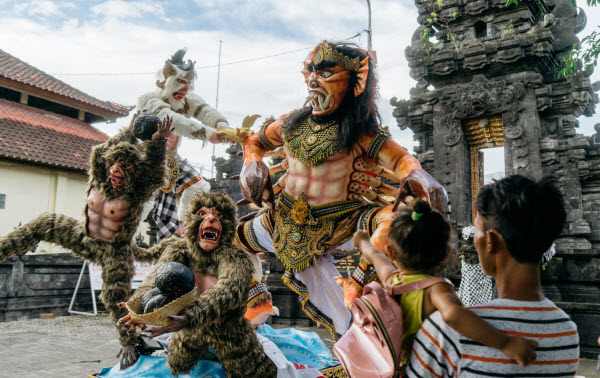
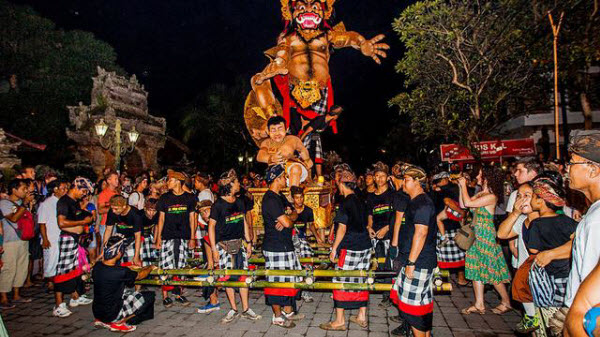
Following the creation of the Ogoh-Ogoh, the Balinese Hindus engage in numerous purification activities to prepare for the New Year and Nyepi. One of the sacred rituals is the “Melasti” ceremony, where Balinese people dress in white and embark on a pilgrimage to nearby water sources—such as the sea, rivers, or lake shores—to purify themselves with water and offer sacrifices. The ceremony culminates at the beach, led by priests and elders to the sounds of traditional gamelan music. Each village has its own way of conducting this procession, which aims to rid participants of sins and unethical ambitions, welcoming a fresh start. Additionally, sacred objects from temples are also cleaned and purified with ceremonial water.
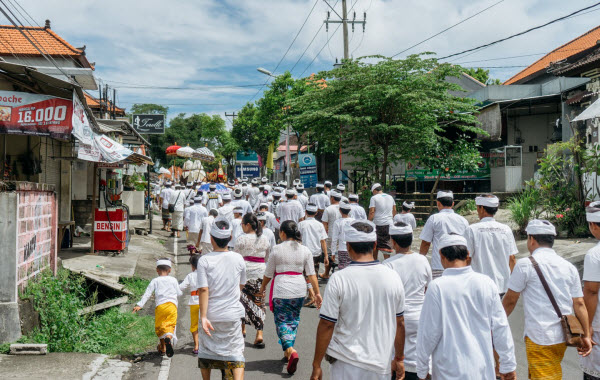
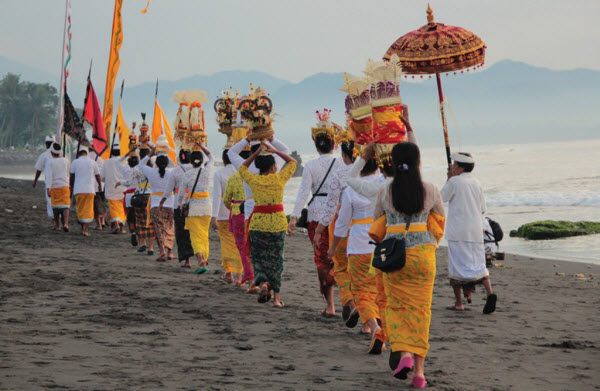
Besides purification parades, other processions visit the numerous temples scattered across Bali, known as the “Island of a Thousand Temples.” The day before the New Year and Nyepi is the most crowded, with locals visiting temples to pray for a better year ahead, to overcome negative elements, and to create balance with deities, humanity, and nature. Worshippers come adorned in their finest attire, carrying the best offerings to show utmost respect and devotion to the gods. As the day progresses, preparations for the grand Ngerupuk parade take place, with villagers displaying their Ogoh-Ogoh creations throughout the streets. Although many of these terrifying effigies are inspired by Hindu mythology, the tradition of Ogoh-Ogoh is relatively recent, introduced during the 1980s.


The parade of the Ogoh-Ogoh continues into the night, with the effigies being paraded through main streets and villages. The direction of the procession is often changed rapidly to confuse and ward off evil spirits that might be lurking in corners. As darkness falls, torches are lit, adding an eerie atmosphere to the festivities. The event culminates with the burning of symbolic evils and effigies, followed by dancing, feasting, and partying. This ritual expels malevolent spirits from the island, along with misguided ambitions and ill intentions, preparing for Nyepi, which starts at 6 a.m. and lasts until 6 a.m. the following day.
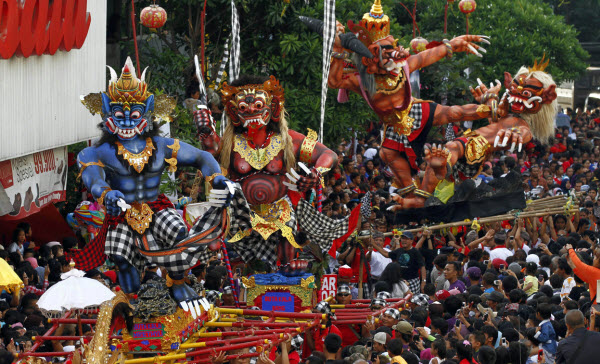
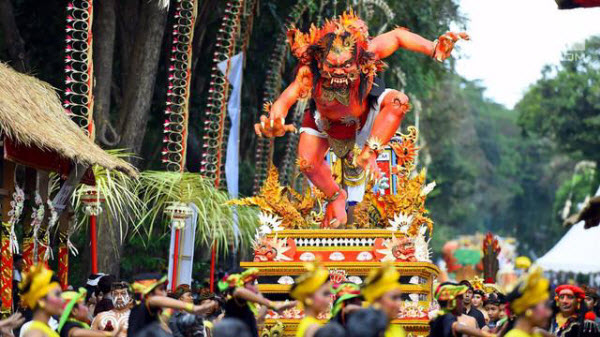
Nyepi is named for the silence observed on this day, during which everyone remains indoors and refrains from all activities such as cooking, entertainment, or indulging in human desires, except for prayer and meditation. The entire island is completely closed, with no radio or television broadcasts available. Lights and fires are prohibited, resulting in an exceptionally dark night, although this does not matter much as no one is allowed outside. While Nyepi is a Hindu festival, non-Hindu residents of Bali also participate in respect for their neighbors. Tourists are free to stay in their hotels but are not allowed to go to beaches or streets. The airport in Bali is closed, and telecommunication services are suspended. Since 2018, some areas have even cut off internet access and electricity. This tranquil atmosphere allows both locals and tourists to take a break from the hustle of modern life, reflecting on higher aspects of existence. Many Balinese Hindus fast throughout the day. To ensure compliance with the rules, local guards known as “Nyepi Police” patrol the island, with the only exceptions being life-threatening situations and women in labor, as hospitals remain open.
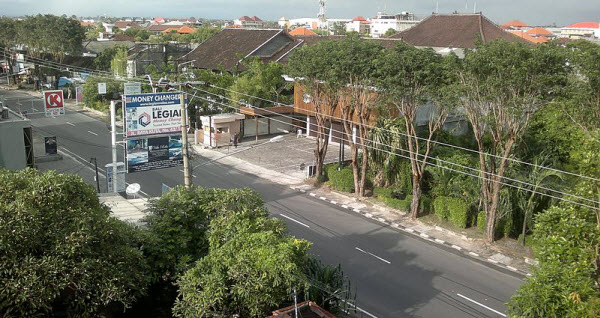
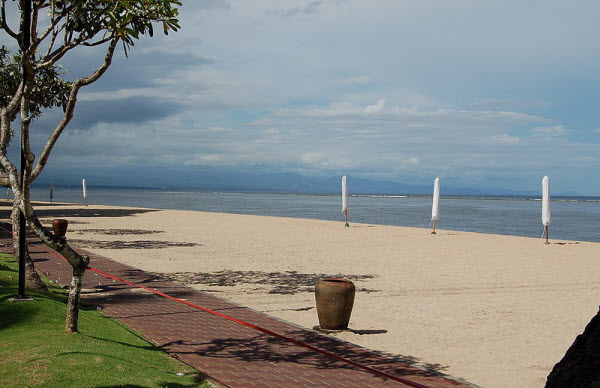
After Nyepi, prayers and rituals continue, with families coming together to offer sacrifices and pray at temples, shrines, or natural settings. The day after Nyepi is also a good time for receiving blessings and purification from elders, as well as mending and forgiving one another. Many people show gratitude for the blessings received the previous day by sharing with those in need. Bali has various ways of celebrating and welcoming the New Year, one of which is the “Omed-Omedan” festival. This festival features traditional performances, including music, dance, and entertainment by local youth, attracting both locals and tourists. Attendees can enjoy local foods from street vendors leading up to the main stage. A highlight of the festival is the kissing of couples, sometimes referred to as the “Kissing Festival,” where young men and women gather on opposing sides, meeting in the middle to exchange kisses or friendly hugs. Water, symbolizing purification, is also sprayed on the crowd from buckets or hoses, eliciting joyous cheers, especially from children.
